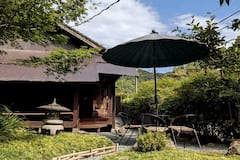When planning a trip, what’s the most important aspect for you? For some, it could be shopping, while for others, it could be visiting attractions, but I think we can all agree that the basic thing to look out for is where to eat and drink! Ever heard of an izakaya? For locals, it is an extremely familiar term but for foreigners, maybe not so much. If it’s your first time in Japan, izakayas are a definite must-go! But what exactly is it? Read on to find out what an izakaya is, what’s on the menu, the average prices and izakaya etiquette! To top it off, we’ll even throw in some recommended izakayas!
What are izakayas?

In Japan, izakayas are casual places for both friends or colleagues to gather and drink after a hard day/week’s work. In the restaurant, it is usually very loud and lively – not highly recommended for a romantic date. The term “izakaya” is essentially a combination of “i”, which means to stay-in and “sakaya”, which refers to a wine house. Izakayas are similar to Spanish tapas bars, providing counter seating as well as tables. The only exception is seating at low tables on the traditional Japanese “tatami” or straw mat in some areas. Some izakayas also provide private rooms or partially-private sections and most, if not all, allow smoking. There might also be time limits placed at certain izakayas to help ease the crowd over the weekends.
While izakayas are mostly known for drinking, they also offer a variety of shared dishes. They generally serve local Japanese cuisine with food items such as vegetables, fish and meat. However, there are some places which offer a Western selection such as pizza and spaghetti or even Chinese dishes like spicy tofu and spring rolls. You never have to look far for an izakaya because it can be commonly found near train stations as well as in entertainment sectors, varying from small bars to multi-level chain establishments.
An izakaya menu

Most chain restaurants or modern izakayas provide menus with pictures that are easy to understand for foreigners. In popular tourist areas, some might even have English menus available, all you have to do is ask. For smaller and more traditional izakayas however, the menu is often without any pictures, which might make ordering dishes difficult for people who don’t know the language.
So, what’s typically on an izakaya’s menu? Different restaurants are bound to offer different food and drink items but here are some that are commonly found on most menus!
Food:
1) Agemono (Deep-fried food) - This term refers to Japanese-style fried food and includes fried shrimp, tempura and chicken karaage to name a few. The process usually involves coating the meat in corn flour or other types of batter and then deep-fried.
2) Edamame - Before ripening, edamame or more commonly known as soybeans, are harvested and boiled in their pods, served with salt. They are a perfect snack to a cold beer.
3) Grilled fish - Another way of cooking the fish would be to dry it for a few days before grilling. This process is known as “hoshimono”.
4) Gyoza - A Japanese version of dumplings which originates from China and are made by wrapping meat or vegetables in a flour skin. Methods of cooking can be pan or deep frying, steaming or boiling in soup.
5) Nabe - This refers to a Japanese hotpot, whereby you place meat, vegetables and other ingredients of your choice into a soy sauce and mirin (Japanese cooking wine) broth.
6) Ochazuke - A rice dish topped with ingredients such as pickled plums, seaweed and salmon, with dashi broth and tea later poured in before eating.
7) Ramen - Noodles covered in your choice of broth, with flavours such as pork, soy sauce, black sesame or miso.
8) Salad - There are a variety of salads such as potato salad or vegetable salads with radish and burdock.
9) Sashimi - This is a general term for raw fish, which is cut into small pieces and occasionally flavoured with wasabi or other sauces and served with various kinds of fish such as tuna or salmon.
10) Sushi - A name familiar to all, made by hand rolling vinegared rice into different shapes. There are various types of sushi with various ingredients such as egg, cucumber and sashimi.
11) Tsukemono Pickles - Made from vegetables pickled in vinegar, salt, kelp, rice bran or other processes.
12) Yakitori - Refers to pieces of grilled chicken on a skewer, including parts such as liver, thigh or breast meat. However, izakayas not only offer chicken but also vegetables, pork and beef on a skewer.
Moving on, what’s an izakaya without alcohol?
Drinks:
1) Beer - Most customers would order beers as their first order, typically known as “namabiru” or draught beer. For beer, a non-standard sized mug is called a “jokki”, whereby a medium sized Mug, “chuujokki”, can hold around 400-500ml and a large sized mug, “daijokki”, can hold around 1L depending on the place.
2) Chuhai - Japanese hard alcohol mixed with tea, soda or carbonated juices rather than water.
3) Sake - Japanese wine made from fermented rice and can be ordered by the glass or in a “tokkuri”, a type of small pitcher able to contain around 180ml (6 oz) of sake. After receiving an order of sake by the glass, some izakayas might display a customary gesture by placing the glass in a wooden box known as a “masu”. The wine is poured until it overflows from the glass into the wooden box.
4) Shochu - A distilled spirit created from sweet potatoes, buckwheat, fermented barley or rice. It can be enjoyed neat, on the rocks, with soda or water.
Average prices of food and drinks

A typical meal in an izakaya could cost between 2000 - 5000 JPY (approximately 18.08 - 45.20 USD) per person. Do take into account that depending on the location and food and drink items, certain izakayas might be cheaper or more expensive. It boils down to what you are planning to have and what you are willing to spend. If you have a big appetite, some places do offer an all-you-can-drink or eat course, which is ideal for you. This course generally begins at 2000 JPY (approximately 18.08 USD) for a fixed period of 1.5 to 2 hours.
Instead of spending all your money at one place, you could try out certain dishes and drinks at different izakayas to get your money’s worth! Alternatively, bring a large group of friends so you can split the cost!
You might be interested in these Airbnbs!
How to order

After you’ve decided on your meal, you can call for the waiter by saying “sumi-ma-sen”, which means “excuse me”. Slightly larger izakayas may provide a small buzzer at the table for you to call for them instead compared to smaller izakayas. On the other hand, certain izakaya chains have digital menu screens for customers to self-order. You can also make a reservation and pre-book a meal course, which contains a limited number of items for a fixed price.
If you are struggling with what to order, some izakayas offer an all-you-can-drink course called “no-mi-hou-dai” as well as an all-you-can-eat course called “ta-be-hou-dai”. Others may offer “tei-sho-ku”, referring to set meals during a certain period, such as lunchtime for example. If you have a small appetite, not to worry as à la carte items are at an affordable price.
Alternatively, if you are still feeling hungry after your first order, you are always welcomed to order more. It is normal for customers to make multiple orders as they eat. There are also no formal rules for ordering food but customers generally end their meal with a rice or noodle bowl.
Making payment

After you’ve had your fill of food and drinks at an izakaya bar or restaurant, it’s time to pay the bill. So how to go about doing it?
Step 1: Ask for the bill. You can either say a) “O-kai-kei o-ne-gai-shi-masu” or b) “O-kan-jou o-ne-gai-shi-masu”. Both which means “please tally the bill”. Alternatively, you can also make a gesture with your index fingers to form an X, while saying “check-ku o-ne-gai-shi-masu”. This means “check, please”.
Step 2: After receiving the bill, it is customary to divide the amount equally among your friends, even if some had a larger portion than others. However, do note that some places may not accept separate payment or credit cards. It is therefore good to be prepared and have sufficient cash on hand.
Step 3: Tipping is not expected hence do bear in mind that you should only pay the exact price at the bottom of the check.
List of helpful Japanese terms at an izakaya

To help make it easy for your first trip to an izakaya, we summarised some Japanese terms mentioned throughout this article!
Food:
1) Agemono “A-ge-mo-no” (Deep-fried food)
2) Edamame “E-da-ma-me” (Unripened boiled soybeans)
3) Gyoza “Gyo-za” (Dumplings)
4) Nabe “Na-be” (Hotpot)
5) Ochazuke “O-cha-zu-ke” (Rice dish with tea poured over)
6) Sashimi “Sa-shi-mi” (Raw fish)
7) Yakitori “Ya-ki-to-ri” (Grilled meat on a skewer)
Drinks:
1) Jok-ki (Non-standard sized beer mug)
2) Chu-hai (Hard alcohol mixed with tea, soda or carbonated juices)
3) Sa-ke (Fermented rice wine)
4) Sho-chu (Spirit made from sweet potatoes, buckwheat, fermented barley or rice)
Ordering:
1) Su-mi-ma-sen (Excuse me)
2) No-mi-hou-dai (All-you-can-drink)
3) Ta-be-hou-dai (All-you-can-eat)
4) Tei-sho-ku (Set meal course)
Payment:
1) O-kai-kei o-ne-gai-shi-masu (Please tally the bill)
2) O-kan-jou o-ne-gai-shi-masu (Please tally the bill)
3) Check-ku o-ne-gai-shi-masu (Check, please)
Izakaya recommendations in Tokyo

As mentioned, izakayas can be easily found all around Japan, such as major train stations, restaurant sections in department stores and shopping areas, and are open till late! Here are some notable ones in Tokyo you should try out!
1) Gonpachi
In Quentin Tarantino’s Kill Bill, the background for the iconic fight scene between Uma and Chiaki was inspired by this very izakaya. You’ll understand why if you take a look! There are also English-speaking staff so don’t worry about ordering. It is highly recommended to book a reservation before you arrive as it may get crowded during meal times.
Gonpachi
Address: 1-13-11 Nishi-Azabu, Minato, Tokyo
Opening Hours: Sunday to Saturday, 11:30am - 5:30am.
Phone: 03-5771-0170
Outlets: Ginza, Odaiba, Shibuya, Sakura-Shinmachi, Azamino, Asakusa
2) Kaikaya by the Sea
This izakaya is known for its innovative and one-of-a-kind seafood drawn with inspiration from Eastern and Western cooking.
Kaikaya by the Sea
Address: 23-7 Maruyamacho, Shibuya, Tokyo
Opening Hours: Monday to Friday, 11:30am - 2pm, 6pm - 11:30pm. Saturday to Sunday, 6pm - 11:30pm.
Phone: 03-3770-0878
3) Kin no Kura
An affordable and popular izakaya chain, with plenty of signs to guide your way. There is even an all-you-can-drink course for 1,980 JPY (approximately 17.90 USD) for two hours.
Kin no Kura
Address: 1-18-18 Sotokanda, Chiyoda, Tokyo
Opening Hours: Monday to Friday, 11:30am - 2:30pm, 4pm - 11:30pm. Saturday and Sunday, 4pm - 11:30pm.
Phone: 03-5289-7851
Outlets: Nippori, Meguri, Shin-Okubo, Shinjuku, Shibuya, Ikebukuro, Kinshicho
4) Torikizoku
If you’re on a tight budget, this izakaya is a perfect option for you! There is only one price for everything on the menu, 280 JPY (approximately 2.53 USD). With 380 branches across Japan, you can be sure to find one in whichever part of Japan you’re in. Try to avoid going during peak periods however as the queues are expected to be long.
Torikizoku
Address: 3F, 1-24-4 Nishi-Ikebukuro, Toshima, Tokyo
Opening Hours: Sunday to Saturday, 5pm - 5am.
Phone: 03-3983-0633
Outlets: Akabane, Shinjuku, Shibuya, Shinagawa
5) Warayakiya
The best in Roppongi, this izakaya can be recognised by the large hanging lanterns outside the restaurant. A straw fire pit is placed in the middle of the izakaya as the fire is used to prepare “katsuo no tataki” or “seared bonito”.
Warayakiya
Address: 6-8-8 Roppongi, Minato, Tokyo
Opening Hours: Monday to Saurday, 5pm - 5am. Sunday, 5pm - 11pm.
Phone: 03-4540-6573
Outlets: Kudanshita, Ueno, Akasaka, Hamamatsucho, Shinjuku, Ginza, Shinagawa
What are you waiting for?
Izakayas are more than bars or restaurants, they are a place to hang out with friends and colleagues! Different izakayas have different specialities so do check out more than one for a worthwhile experience. Try everything on the menu, from edamame to sashimi and most definitely do not forget to accompany it with a good alcohol! There are no formal rules for ordering and payment but do treat it as a guide to avoid any trouble. So what are you waiting for? Pack your bags and head to Japan for a unique and authentic izakaya experience!
History
Get Trip101 in your inbox
Unsubscribe in one click. See our Privacy Policy for more information on how we use your data






















Create an account to